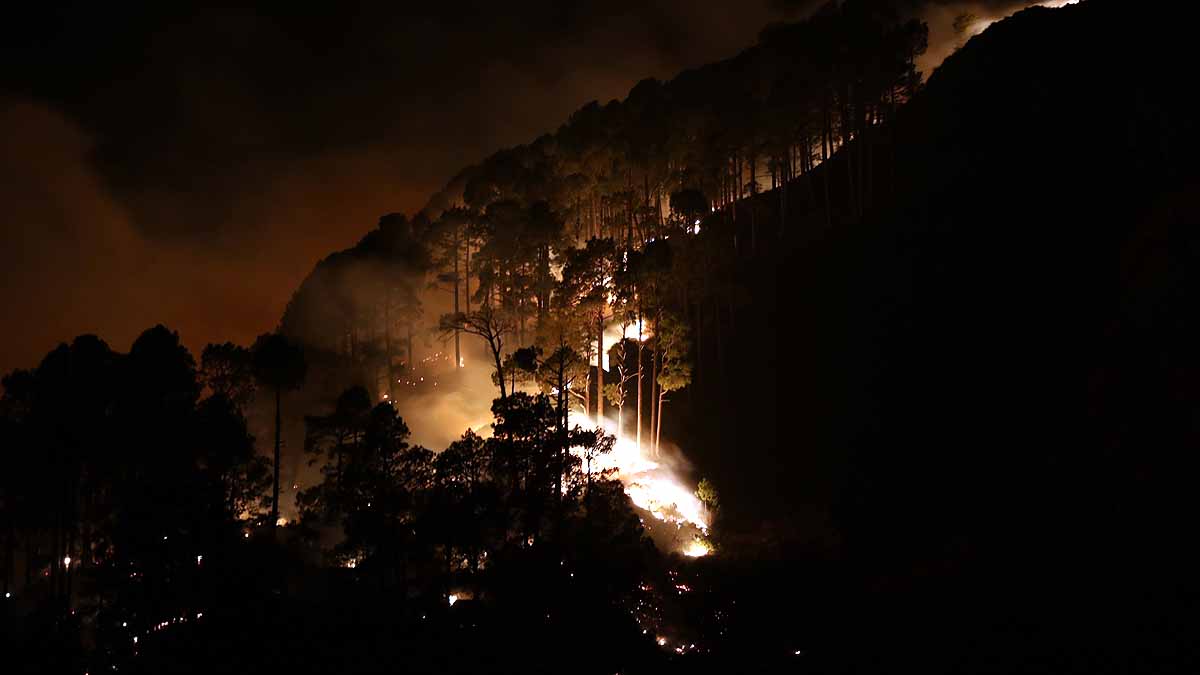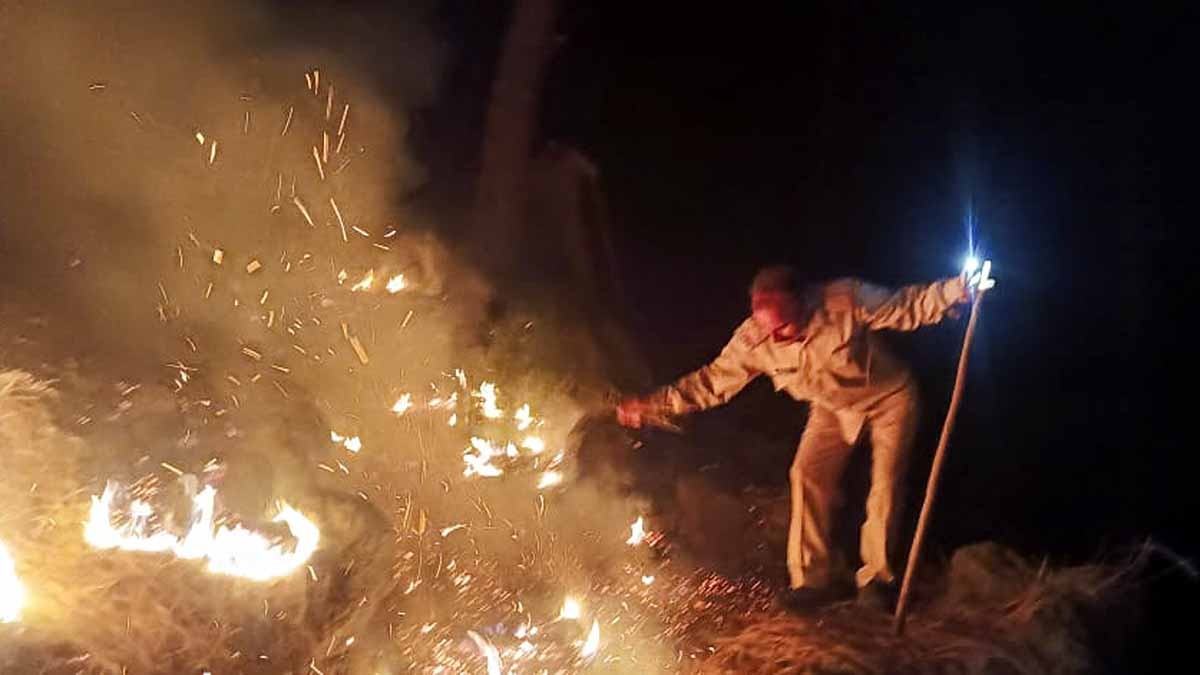The Himalayas are ablaze, as wildfires sweep through the forests of three Himalayan states. Initially drawing attention in Uttarakhand, the infernos have since spread to Himachal Pradesh, and now, the Rajouri sector in Jammu & Kashmir is also succumbing to flames. Punjab and Haryana have visible fires too, but these are from burning crop residue and unrelated to the forest fires.
From May 1 to May 27, 2024, India has witnessed over 80,000 fire incidents, captured by satellites. The Himalayan states are the hardest hit by these wildfires, exacerbated by the summer heat.

Source: aajtak
Himalayan states are experiencing a dramatic increase in forest fires due to a combination of human error and climate change, sparking fears of a fiery catastrophe. Prof. Piyush Srivastava from IIT Roorkee's Centre of Excellence in Disaster Mitigation & Management explains that these states have mixed forests with complex geographical features, slopes, and dry vegetative fuel known as 'Dry Fuel Condition'.
Just like other seasons, there is a Wildfire Season, typically spanning from November to June in India when forests are susceptible to fires. This year's pre-monsoon season saw a decline in Western Disturbance events and overall lesser snowfall, which has aggravated the dry conditions, leading to early and widespread wildfires.
The raging infernos will deteriorate air quality, increase airborne carbon particles, affect glaciers, and potentially lead to catastrophic events similar to Chamoli and Kedarnath. Scientists are certain that these fires are primarily due to human activities—either by accident or intentionally set. With climate change heating things up, even a small spark can have disastrous consequences.

Source: aajtak
An indigenous Early Warning System is being developed by Prof. Piyush and his colleague Anandu, aiming to predict forest fires by inputting current data on temperature, weather conditions, and geographical features. Such advances in technology, along with support from ISRO-NASA's new satellite NISAR, promise to help mitigate future forest fire disasters.




